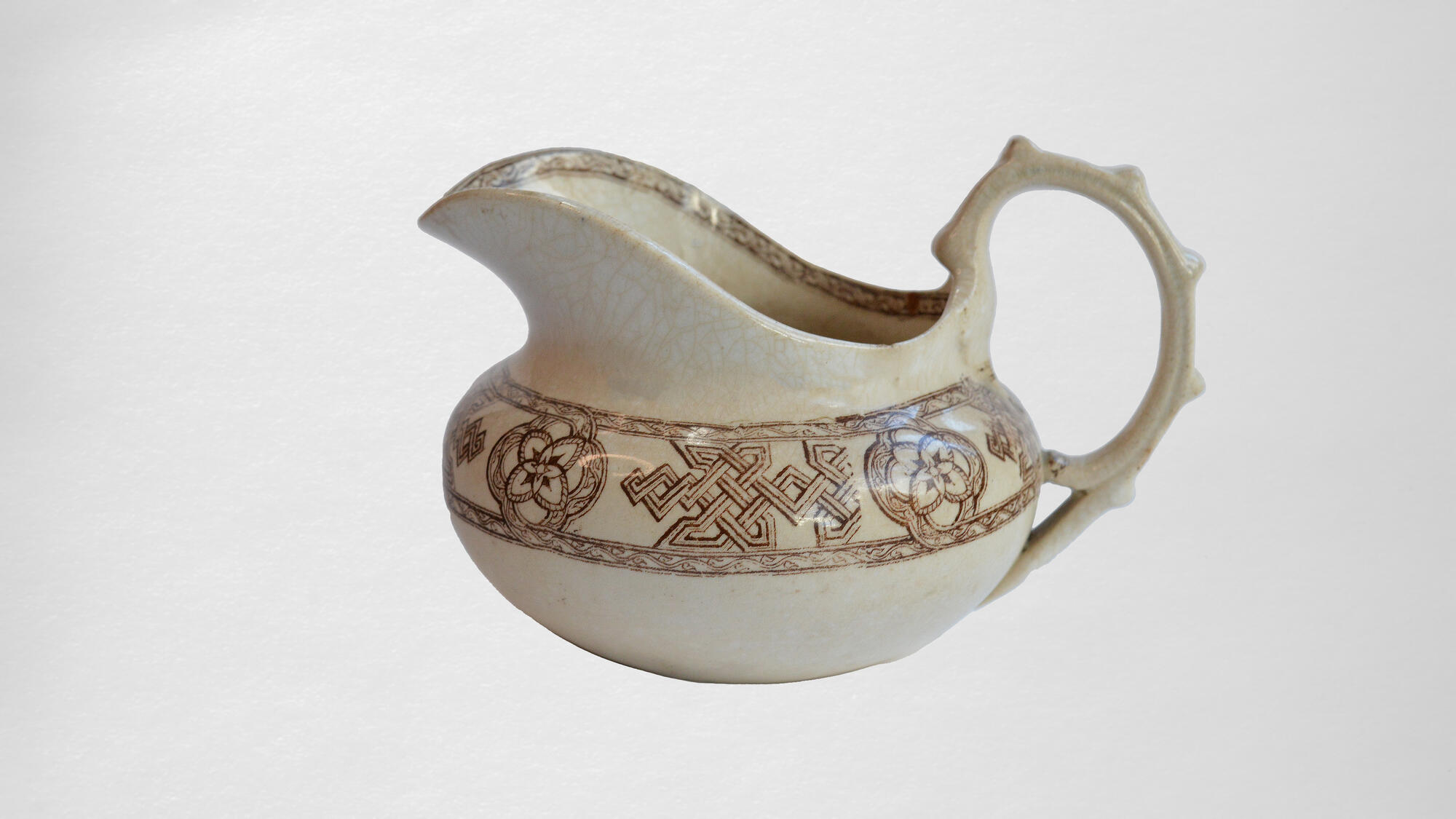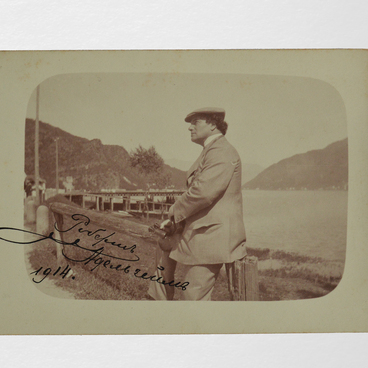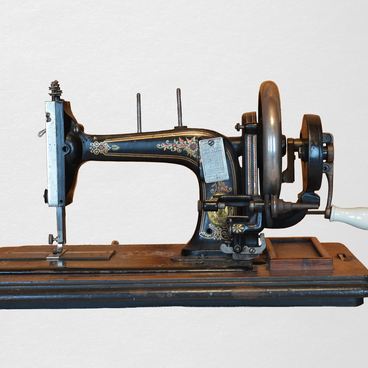This vessel for milk or cream was owned by Izmail Semenov-Tyan-Shansky — the youngest son of Pyotr Semyonov-Tyan-Shansky, a distinguished scientist, geographer, public and state figure. Izmail Petrovich lived in the same house on Vasilievsky Island in St. Petersburg, as his father did from 1861 to 1914.
Tableware, among other things, was passed down in the family: from Izmail Petrovich, a famous meteorologist to his daughter Olga Korolkova, a Soviet chess player and a master of sports of USSR. She gave birth to two children — Nadezhda and Alexander. It was Nadezhda Korolkova, a great-granddaughter of the scientist, who donated the tableware, that was used by Semenov-Tyan-Shanskys in their everyday life, to the museum.
Specialized vessels for serving milk have existed for at least several millennia. In its modern form, milk jugs appeared in Great Britain, when the British started to add milk and sugar to tea in 1720s and felt a need for special devices. Though, the appearance of milk jugs lagged behind other items in the tea service. It was only in the 1740s, when silver milk jars became popular as gifts. Sets of a teapot, sugar bowl and milk jug, designed in a single style also started to be actively used and given as gifts in the second half of 17th century.
In the museum’s collection there is a milk jug from the Palermo service made in England by Brown Westhead & Moore. In England and abroad, this company was considered a manufacturer of high quality tableware. Next to the brand of the company there is an image of the coat of arms of Great Britain— a lion with a unicorn, supporting a shield. This is a distinctive feature of the manufacturers who supplied the goods to the royal court of Great Britain.
This image began to be added to crockery in 1890. It is also known that the firm that made the milk pot was called Brown Westhead and Moore until 1904. This means that the piece belonging to the Semyonov-Tyan-Shansky family was produced between 1890 and 1904.
Tableware, among other things, was passed down in the family: from Izmail Petrovich, a famous meteorologist to his daughter Olga Korolkova, a Soviet chess player and a master of sports of USSR. She gave birth to two children — Nadezhda and Alexander. It was Nadezhda Korolkova, a great-granddaughter of the scientist, who donated the tableware, that was used by Semenov-Tyan-Shanskys in their everyday life, to the museum.
Specialized vessels for serving milk have existed for at least several millennia. In its modern form, milk jugs appeared in Great Britain, when the British started to add milk and sugar to tea in 1720s and felt a need for special devices. Though, the appearance of milk jugs lagged behind other items in the tea service. It was only in the 1740s, when silver milk jars became popular as gifts. Sets of a teapot, sugar bowl and milk jug, designed in a single style also started to be actively used and given as gifts in the second half of 17th century.
In the museum’s collection there is a milk jug from the Palermo service made in England by Brown Westhead & Moore. In England and abroad, this company was considered a manufacturer of high quality tableware. Next to the brand of the company there is an image of the coat of arms of Great Britain— a lion with a unicorn, supporting a shield. This is a distinctive feature of the manufacturers who supplied the goods to the royal court of Great Britain.
This image began to be added to crockery in 1890. It is also known that the firm that made the milk pot was called Brown Westhead and Moore until 1904. This means that the piece belonging to the Semyonov-Tyan-Shansky family was produced between 1890 and 1904.



